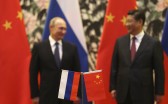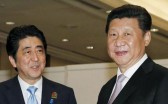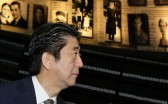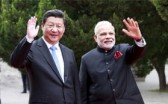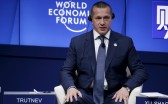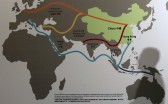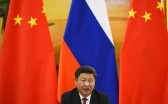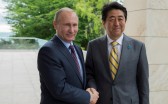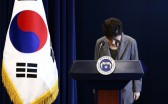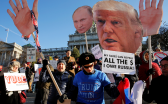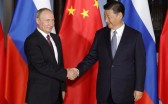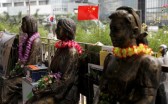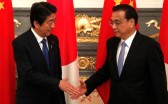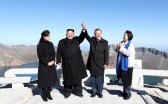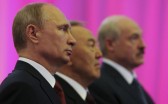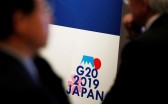Russia is doing many sensible things on a bilateral basis in its attempt to become one of the two main independent poles in Eurasia – the other pole, of course, being China. At the May 2017 Belt and Road (BRI) summit in Beijing, President Putin said: “I believe that by adding together the potential of all the integration formats like the Eurasian Economic Union (EEU), the One Belt One Road (or BRI), the Shanghai Cooperation Organization (SCO) and the Association of South East Asian Nations (ASEAN), we can build the foundation for a larger Eurasian partnership.”1 Putin clearly believes that Russia will be a leader, or pole, in this process.
Putin’s statement is notable for both the countries that it includes and those that it does not. Besides Russia, the members of the EEU are Belarus, Armenia, Kazakhstan, and Kyrgyzstan. Members of the SCO are Russia, Kazakhstan, Kyrgyzstan, Tajikistan, Uzbekistan, China, India, and Pakistan. While Mongolia and Iran (and even Turkmenistan) are talked about as possible new SCO members, Belarus and Armenia are not. The inclusion of ASEAN is odd when it remembered that it includes highly-developed Singapore and seems to be an ambit claim based on Russia’s good relationship with Vietnam. The exclusion of both Japan and the two countries of the Korean Peninsula recognizes the reality that neither Japan nor South Korea will ever see Russia as a leader – or pole – of any group of which they are members, while North Korea’s first pole can only be China.
According to Alexander Lukin: “When the collapse of the Soviet Union destroyed hopes of building a united Europe stretching from Lisbon to Vladivostok, and when the West’s relations with Russia and China began deteriorating early in this century, Russian political scientists proposed the idea of ‘Greater Eurasia’ and Russian leaders soon adopted it as official policy. The idea was that ‘Greater Eurasia’ – based on cooperation between Russia, China, India, Central Asia, and other countries of the continent – would become one of the economic and political centers of the emerging multipolar world, or even a conglomeration of several non-Western centers that had no proper place in the sweeping global system imposed by the West.” 2 He claims that “China gave its official sanction to the concept and began concrete work with Russia towards its implementation.”
An August 2018 Russian International Affairs Council (RIAC) report, jointly authored by Russian and Chinese specialists, says that the “concept of Greater Eurasian Partnership spanning from Europe to Southeast Asia started to gain momentum in 2017” and that “experts and economists in the EEU believe that within ten years the Greater Eurasian Partnership would exist as a network of free trade zones and trade blocs.” It says that the “Greater Eurasian Union is a way for Russia to adopt a strategy of advanced development by accelerating new technological facilities and institutes of the new global economic order. In this case, Russia and the EEU could claim full participation in the new centre of the global economic system.”3
According to Sergei Karaganov, “one of its fundamental functions” of the Greater Eurasia idea is to “‘immerse’ China in connections, cooperative ties, balances, and agreements in order to keep it from being seen as a potential hegemon to be inevitably opposed by other Asian countries.”4 In other words, part of the idea is to stop China from becoming the only pole in Eurasia.
The main components of Russia’s Eurasian strategy are: having good bilateral relations with all Eurasian countries (including Japan and the two Koreas); using the EEU as part of its power base, including attempting to link it to China’s BRI; strengthening the role of the SCO in Eurasian security under the leadership of Russia; selling lots of military equipment and building military relationships; looking for ways to increase its influence over events in “hot-spots” such as Afghanistan and North Korea; and taking advantage of any anti-US sentiment that it can find. While Putin and the Russian government are showing considerable tactical skill in a number of these areas, the strategy to be a pole in Eurasian (however defined) affairs is doomed to fail, in my assessment, as explained below.
China
According to Karaganov, the BRI “project is aimed to help built the logistic and economic framework for Greater Eurasia”5 A June 2018 Valdai Club report says that “Chinese geostrategy is based on Russia’s military might, given the countries’ close and trusting relationship.”6 The above-discussed August 2018 RIAC report says that “overall, Chinese scientists and experts are positive about the initiative, seeing great opportunities for the development and construction of a Greater Eurasia.”7 Indeed, some Chinese commentators do say positive things about Greater Eurasia. Li Yongquan, writing in the same August 2018 issue of the Journal of Eurasian Studies, says: “The Greater Eurasian Partnership is not only one of the most important concepts of cooperation that Russia has put forward, but also a fully practicable plan for international cooperation.”8
Other Chinese are much more sceptical. Ka-Ho Wong, writing in a May 2018 RIAC “blog”, said that “Chinese scholars understand the Greater Eurasian Partnership by reading Sergei Karaganov’s articles and the relevant Valdai club reports.”9 Almost exactly the same words were said directly to me in June 2018 by a senior Chinese official involved in BRI. Wong added that Russian scholars perceive the “Greater Eurasian Partnership” as “grand strategy,” while Chinese specialists consider it an “opportunistic move” by Russia to cope with its “international isolation” and consider the idea to have a “bleak future” because of its “vagueness” and “strong political sense.” He concluded that Chinese consider Russia a “Eurocentric country,” which will abandon the partnership “following rapprochement with the West.”
The reality is that China is not interested in helping Russia become an independent pole in Eurasia, although it is willing to allow Russia the illusion that it is succeeding in this goal. While China has agreed to announcements suggesting a link between its BRI and the Russian dominated EEU, China consistently deals with Central Asian EEU members – Kazakhstan and Kyrgyzstan – on a bilateral basis. Official documents for the May 2017 BRI summit make only one reference to the EEU. In contrast, there are many mentions of individual Central Asian countries – particularly Kazakhstan – and China’s trade and investment relations with them.
A couple of years earlier, things may have seemed more hopeful for Greater Eurasia. A May 2015 joint declaration of presidents Xi and Putin says that Russia and China will “continue to search for points connecting regional economic integration processes within the framework of the EEU and Silk Road Economic Belt (SREB) in the interest of providing sustainable economic growth in Eurasia on the basis of strengthening cooperation and trust. The sides look forward to the start of negotiations between the EEU and China about concluding an agreement on trade-economic cooperation.”10 An associated document specified “consideration of the long-term goal of moving towards a free trade zone between China and the EEU” and indicated that working groups would be formed to make progress on issues.11
Putin’s June 25, 2016 visit to China resulted in a joint statement that reads in part: “Russia and China advocate building a comprehensive Eurasian partnership on the basis of openness, transparency and the consideration of each other’s interests, including the possible involvement of the member countries of the EEU, SCO, and ASEAN. In this regard, the heads of state instructed the governments of the two countries to work through the relevant departments and propose measures to implement this initiative in order to promote the deepening of the integration processes in the region.”12 But, a year later, the July 3-4 2017 meeting between Putin and Xi in Moscow suggested little progress. Putin said, “We held an in-depth exchange of opinions on joining the activity of the EEU with the Chinese initiative of the SREB. This is a highly promising direction, putting collective effort in line with our idea to form a broad Eurasian partnership.” For his part, Xi Jinping simply said: “We are developing our coordination of the BRI and the EEU” and work to “promote development and prosperity on the Eurasian continent.”13
On July 4, 2017, the Chinese commerce minister and Russian economic development minister signed a joint declaration on the Feasibility Study of the Eurasian Economic Partnership Agreement. Note that this was two years after the May 2015 joint statement on the SREB and EEU.14 Li notes that “by this time, Russia and China had, over the course of their working relationship, changed the wording of the ‘comprehensive Eurasian partnership’ (or “broad Eurasian partnership” in Putin’s words) to the ‘Eurasian Economic Partnership.’”15 But, according to Lukin, “most Russian and Chinese experts see a Eurasian Economic Partnership as just part of a larger comprehensive Eurasian partnership, or a Greater Eurasia. The media and the expert community all began referring to a ‘Greater Eurasia.’”16 Lukin is a believer, writing that “global trends favour the creation of a ‘Greater Eurasia,’ indicating that the process is irreversible.”
Following the June 2018 SCO summit, Putin mentioned to Russian journalists an “agreement on deepening cooperation between the People’s Republic of China and the EEU” which was “signed in Astana” on May 17, 2018.17 This eighty-one-page document is very general and far from any sort of comprehensive trade or economic agreement.18 Putin himself acknowledged this, saying it was only “one step” and in an earlier interview with China Media Corporation he indicated there was yet “no question of reducing tariffs.”19 Putin also told the journalists that, while in China, he had agreed to a feasibility study for “a broad Eurasian economic partnership.” Once again, this seemed to indicate a narrower focus on economic issues than the “larger comprehensive Eurasian partnership, or a Greater Eurasia” that Putin and some Russian analysts would like to see. Moreover, this was three years after the issue was first publicly mooted at the leadership level in May 2015.
Shi Ze has reportedly summed up the basic reason for China being wary: “China and Russia have different attitudes. Russia wants to break the current international order. Russia thinks it is the victim of the current international system, in which its economy and its society do not develop. But China benefits from the current international system. We want to improve and modify it, not to break it.”20 Whether this is true or not, most of the other countries in Eurasia will have a similar view, which makes it very difficult for Russia to position itself as an Eurasian pole.
South Asia (India and Pakistan)
Prime Minister Narendra Modi and Putin met in Sochi on May 21, 2018, partly to celebrate 70 years of relations. In his keynote address at the Shangri La Dialogue in Singapore on June 1, Modi declared: "It is a measure of our strategic autonomy that India’s Strategic Partnership, with Russia, has matured to be special and privileged. Ten days ago, in an informal summit at Sochi, President Putin and I shared our views on the need for a strong multi-polar world order for dealing with the challenges of our times."21 Nevertheless, India is upset about Russia’s efforts to get closer to China. In my own direct experience listening to Indian officials, they at times sound like jilted lovers. A recent joint-report produced by the RIAC and India’s Vivekanada International Foundation contained two separate forewords.22
On the Russian side there was an indication of Russian insensitivity to the position of India on China’s BRI. The Russian foreword said that “unfortunately, the (Indian) expert community did not recommend that the Indian leadership attend the BRI Forum in Beijing in May 2017,” adding “where else but at the Forum could Russia, India, Iran and even Afghanistan discuss the need to build an International Transport Corridor (ITC) as part of the Belt and Road without allowing the massive infrastructural mega-project to profit only one party?”
The foreword for the Indian side was blunt, saying that India felt let-down by Russia on the issues of China, Pakistan, Afghanistan, and the US. On the issue of the ITC, it said that “Russia, Iran and India could have jointly realised the ITC if the determination was there. China can be involved today, but without this project having to be part of China’s BRI, especially as the ITC predates the BRI by years.”
The reference to the US by the Indian side may be unfair, but that to Pakistan has more substance. In April 2018, a Pakistani delegation led by its national security adviser went to Moscow and met with the secretary of the Russian Security Council. According to the Council’s internet site, “the sides emphasized their interest in further cooperation between Moscow and Islamabad in the sphere of security. The issues of bilateral military cooperation, cooperation in the sphere of information security, counteraction to international terrorism are considered. The general situation in South Asia, the main challenges and threats to global security are discussed.”23 While it is reasonable for Russia to attempt to build a good relationship with Pakistan given their common interests in China and Afghanistan, it is inevitable that India will be upset.
Russian arms sales to India are the present mainstay of the relationship. The two main obstacles to Indian diversification of sources of military equipment seem to be the lower prices of the Russian arms and the fact that a large proportion of India’s present equipment is of Russian (or USSR) origin with systems that are complex to integrate with equipment from other sources.24 For India, Russia is certainly no pole.
Central Asia
The Russian annexation of Crimea unsettled other ex-Soviet countries, which feared it may be a precedent for greater interference in their own countries. This was particularly the case with Kazakhstan, which shares a long border with Russia. But even before this, Kazakhstan was wary and has insisted that the EEU not become a political group but instead limit itself to economic affairs. The EEU is, thus, basically a customs union with the addition of a common labor market. This has been particularly beneficial to Kyrgyzstan, which depends on remittances from its workers in Russia for about one-third of its GDP. Tajikistan, Uzbekistan, and Turkmenistan have remained outside the EEU, preferring a more independent stance in the world. Russian desires to be an independent pole in Eurasia are partly compromised by its attempted use of the EEU to achieve this. Russia does not have complete control over the EEU; so it is as much a constraint on Russia as a bargaining advantage.
As the US negotiates with the Taliban, seeking a way to withdraw its troops from Afghanistan, Russia is trying to boost its influence. In November 2018 it hosted a conference in Moscow that was attended by the representatives of the Taliban, the Afghan government, Pakistan, Iran, and China. It makes a lot of sense to involve the last three countries in this issue, but Russia’s Soviet history in Afghanistan makes it hard to be seen as working for the Afghan people.25
ASEAN
Ekaterina Koldunova has recently written that a number of events in East Asia have created a “window of opportunity for Russia to offer the regional countries a more cooperative agenda, even if it is not on the same scale as US or Chinese projects.26 She says that Russia aims to “demonstrate to the West that it has places to turn to politically and economically.” Military sales are an important component of this.27 While the EEU has a free trade agreement with Vietnam the amount of actual non-military trade (as with all ASEAN countries) is very small.
Russia is not any sort of pole in Eurasia for ASEAN.
Iran
Iran is included in most discussions of the Greater Eurasian Partnership. In June 2016, Putin spoke about a “greater Eurasian” partnership “involving the EEU and countries with which we already have close partnership – China, India, Pakistan and Iran” and “other interested countries and associations.”28 While Iran would not object to this, its focus is elsewhere, as it struggles with a number of Arab countries and US sanctions. There are many reasons for Iran to accept Russia as a useful partner, but none for it to accept Russia as any sort of pole.
Japan and the Korean Peninsula
While Japan, South Korea, and North Korea are not part of the Eurasian Partnership identified by Putin or Russian supporters of the idea, they are not totally irrelevant to it. Putin wants to show that generally Russia is a reasonable partner with which to be involved. There have been some signs that he might be willing to cut a deal with Japan on the Southern Kuril Islands issue by giving up control of the two smallest (of the four) disputed islands, but the Russian public, which has been increasingly reminded of the sacrifices of the Patriotic War by the Russian government, is in no mood to compromise. A recent survey indicated overwhelming opposition to a deal. “Any hint that the islands will be given to Japan causes, as a rule, outrage in society,” said the head of the survey organization.29 The US alliance is an additional reason for not including Japan in the Greater Eurasian Partnership concept.
Likewise, South Korea has too close a relationship with the US. It is possible to imagine the inclusion of North Korea, but its “rogue” status makes it at present unacceptable as a lauded partner.
Russia’s anti-Western stance
Karaganov says that the “Greater Eurasian Partnership is also a conceptual framework for Russia’s future geo-strategic and geo-economic self-identification as the center and the north of the rising continent and one of its key transportation and economic links, but most importantly, as a key security provider.”30 Yet, Russia’s at times very aggressive anti-Western stance (and its extremely anti-US stance) on a variety of issues reduces its attractiveness as a possible alternative pole in the world and in Eurasia. Saying this is not to absolve the West from any blame for the current situation. Actual and mooted NATO expansion engendered fear among many in the Russian security establishment. Regardless of who is ultimately to blame, Russia has not handled the post-Crimea annexation period well. It has tended to inflame the situation rather than try to claim it.
Anti-Asian views in Russia
Despite the official stance, there is a tendency by Russians to look down on Asians, including Chinese, who are often viewed as less creative. While living in Russia, I heard this view quite often expressed by educated Russians. In mid-2016, I was at an event in Moscow where Dmitry Peskov of the “National Technology Initiative” partly justified this policy by contrasting Russian creativity in regards to future technology with Asian production-line mentality in use of existing technology.31 The Russian business community naturally wants to make money from the Asian (particularly Chinese) connection, but very few feel any affinity for Asia. Basically, most Russians would rather be an independent pole in Europe than in Eurasia.
Russian domestic economic policy
Putin and his security advisers do not seem to comprehend the need for better domestic economic policies that would ultimately give Russia a stronger economy and more influence in Eurasia. While the overall stance of monetary and budget policy and some areas of micro-economic reform are managed by capable technocrats, the authoritarian political scene and corruption hinder entrepreneurial confidence and activity. In terms of technology, Russia has very little to offer other countries except comparatively cheap armaments, but as India complains, even the quality of those sometimes leaves much to be desired.
SCO
According to Karaganov, “at the initial stage, the Russia-China tandem should lead the way” on the Greater Eurasian Partnership concept. He says that “their leaders have officially expressed their support” for it, “but it needs to be specified and developed further through multilateral dialogue.” He sees the SCO as “a natural platform for such partnership,” although it “needs to be more energetic and open, and turn from a purely regional organization into an organization of organizations.”32
At one stage China was keen to expand the scope of activities of the SCO to include a free trade agreement, but Russia was opposed because it wanted the EEU (and not individual members such as Kazakhstan) to be the pillar of a Eurasian economic-trade bloc. Now that it has its BRI, China is less interested in the SCO as an economic entity. On top of that, the inclusion of India and Pakistan in the SCO, the former against the earlier desire of China, has converted the SCO into little more than a regional talk-fest. The official documents for the 2017 BRI summit made several mentions of the SCO, but there is nothing to suggest any sort of linking of the BRI, the EEU and the SCO. Russia has overplayed its hand on the SCO and, partly because of this, Karaganov’s ideas on the SCO are not realistic.
Conclusion
In contrast to its general attitude to the non-Asian “West” and the Ukraine, Russia has been a moderate and generally skilful player in Eurasia. However, the cards are stacked against it becoming a significant, independent pole there. While some countries in Southeast Asia and Central Asia may look to Russia for support against an increasingly assertive China, Russia is constrained by the overall primacy that it attaches to political friendship with China. Even if the Russian government wanted to do more, there is little to suggest that the Russian business community or the intellectual elite perceive relationships with the Asian part of Eurasia as important as relationships with Europe. Thus, Russia will not become an independent pole in Eurasia.
1. “Belt and Road international forum, May 14, 2017,” http://en.kremlin.ru/events/president/news/54491
2. Alexander Lukin, "Eurasia – From confrontation to partnership," Journal of Eurasian Studies, August 2018, https://www.sciencedirect.com/science/article/pii/S1879366518300204
3. “Russian-Chinese Dialogue: the 2018 Model,” RIAC, August 21, 2018,
http://russiancouncil.ru/en/activity/publications/russian-chinese-dialogue-the-2018-model/
4. Sergei Karaganov, "The new Cold War and the emerging Greater Eurasia," Journal of Eurasian Studies, August 2018, https://www.sciencedirect.com/science/article/pii/S1879366518300174
5. Ibid.
6. “The Rise of the Rimland: The New Political Geography and Strategic Culture,” Valdai Club, June 19, 2018, http://valdaiclub.com/a/reports/rise-of-rimland/
7. “Russian-Chinese Dialogue: the 2018 Model.”
8. Yongquan Li, "The greater Eurasian partnership and the Belt and Road Initiative: Can the two be linked?" Journal of Eurasian Studies, August 2018, https://www.sciencedirect.com/science/article/pii/S1879366518300198
9. Ka-Ho Wong, "A Comparative Study of the Greater Eurasian Partnership: The Chinese and Russian Perspectives," RIAC, May 31, 2018.
10. “Совместное заявление Российской Федерации и Китайской Народной Республики об углублении всеобъемлющего партнерства и стратегического взаимодействия и о продвижении взаимовыгодного сотрудничества,” Kremlin.ru, May 8, 2015, http://kremlin.ru/supplement/4969
11. Ibid. “EAEU” has been changed to “EEU” according to the journal’s designation.
12. Yongquan Li, "The greater Eurasian partnership and the Belt and Road Initiative.”
13. “Press statements following Russian-Chinese talks,” July 4, 2017, http://en.kremlin.ru/events/president/news/54979
14. The same day in Moscow saw the signing of the Joint Declaration of the Russian Federation and the People’s Republic of China on the Further Deepening of the Comprehensive Partnership and Strategic Cooperation Relationship.
15. Yongquan Li, "The greater Eurasian partnership and the Belt and Road Initiative.”
16. Aleksandr Lukin, China and Russia: The New Rapprochement (Cambridge: Polity Press, 2018),
https://books.google.com.au/books/about/China_and_Russia.html?id=777SswEACAAJ&source=kp_book_description&redir_esc=y
17. “Владимир Путин ответил на вопросы журналистов, По завершении работы саммита Шанхайской организации сотрудничества Владимир Путин встретился с российскими журналистами и ответил на их вопросы. июня 10, 2018,” http://kremlin.ru/events/president/news/57719
18. “Соглашение о торгово-экономическом сотрудничестве между Евразийским экономическим союзом и его государствами-членами с одной стороны, и Китайской Народной республикой, с другой стороны,” https://docs.eaeunion.org/docs/ru-ru/01417817/iatc_21052018
19. “Интервью Медиакорпорации Китая, июня 6, 2018,” http://kremlin.ru/events/president/news/57684
20. Yaroslav Trofimov, "The New Beijing-Moscow Axis," The Wall Street Journal," February 1, 2019, https://www.wsj.com/articles/the-new-beijing-moscow-axis-11549036661
21. Vinay Shukla, "From Sochi to Singapore Modi asserts India’s strategic autonomy," RIAC, June 7, 2018 http://russiancouncil.ru/en/blogs/Vinay-Shukla-blog/from-sochi-to-singapore-modi-asserts-indias-strategicautonomy/
22. S. Ivanov, ed., “70th Anniversary of Russia-India Relations: New Horizons of Privileged Partnership: Report No. 34/2017,” RIAC http://russiancouncil.ru/papers/Russia-India-Report34-En.pdf
23. "В Москве состоялись российско-пакистанские консультации по вопросам безопасности," Совет Безопасности Российской Федерации, April 23, 2018, http://www.scrf.gov.ru/news/allnews/2399/
24. According to the internet site of Russia’s main military equipment exporter, Rosoboronexport, “military-technical cooperation between Russia and India hearkens back to mid-1950s” and “at present the armed forces of India are 70 per cent equipped with Soviet/Russian weapons,” http://roe.ru/eng/export/india/. There is no indication of when or how this 70 percent was calculated.
25. Lara Seligman, "As U.S. Mulls Withdrawal from Afghanistan, Russia Wants Back in," Foreign Policy, January 31, 2019,
https://foreignpolicy.com/2019/01/31/us-mulls-withdrawal-from-afghanistan-russia-wants-back-in-taliban-peace-talks/
26. Ekaterina Koldunova, “ASEAN, EAS and APEC: What Russia Achieved in 2018,” RIAC, November 26, 2018,
http://russiancouncil.ru/en/analytics-and-comments/analytics/asean-eas-and-apec-what-russia-achieved-in-2018/
27. Matt Bartlett, "Russian arms flood Southeast Asia," The Interpreter, Lowy Institute, February 8, 2019,
https://www.lowyinstitute.org/the-interpreter/russian-arms-flood-southeast-asia
28. Plenary session of St Petersburg International Economic Forum, June 17, 2016, http://en.kremlin.ru/events/president/news/52178
29. “77% of Russians Oppose Ceding Kuril Islands to Japan, Poll Says,” The Moscow Times, January 28, 2019,
https://themoscowtimes.com/news/77-percent-russians-oppose-ceding-kuril-islands-japan-poll-says-64302
30. Sergei Karaganov, "The new Cold War and the emerging Greater Eurasia."
31. For more on the National Technology Initiative, see: Jeff Schubert, “National Technology Initiative – ‘Waiting for High-Tech Tooth-Fairy!”” Russian Economic Reform, June 30, 2016, http://russianeconomicreform.ru/2016/06/russian-national-technology-initiative-failure-or-success/
32. Sergei Karaganov, "The new Cold War and the emerging Greater Eurasia."

